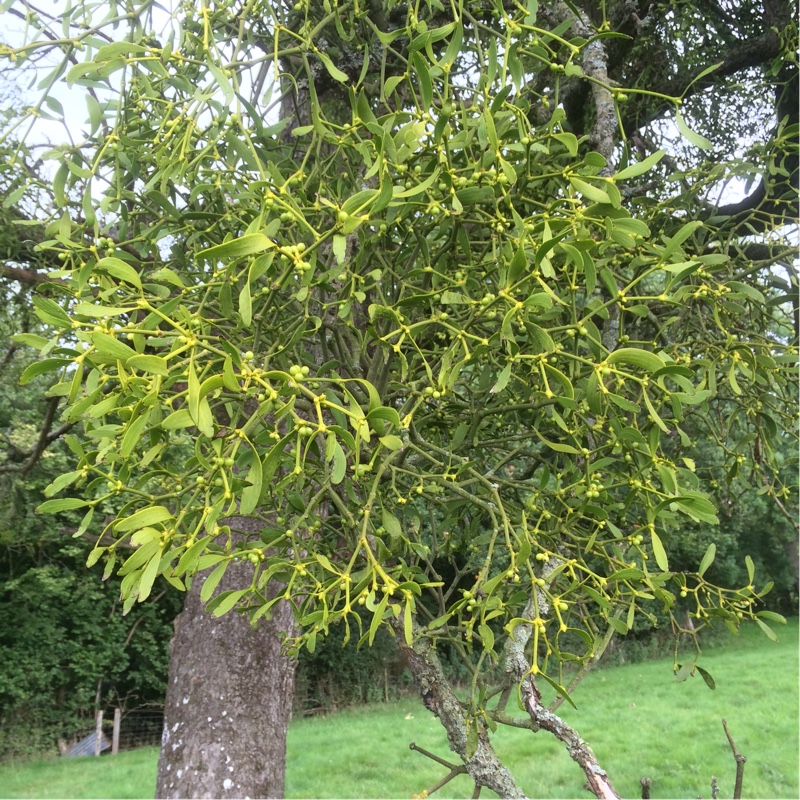
Viscum album
Mistletoe
Viscum album - European Mistletoe - is a hemi-parasite on several species of trees,(often apple trees) from which it draws water and nutrients. It forms a ball up to a metre wide in host trees. It has yellowish-green leathery leaves in opposite pairs and inconspicuous yellowish-green flowers that are pollinated by insects, and followed by white or yellow berries each containing one (very rarely several) seed in the glutinous fruit pulp.
Contributed by @tiggrx
-
Full sun to partial shade
-
Occasional watering
-
Full Frost Hardy: 5F (-15°C)
-
Moist and fertile
Common name
Mistletoe
Latin name
Viscum album
type
Evergreen Shrub
family
Santalaceae
ph
5.5 - 8.5 Acid - Neutral
Plant & bloom calendar
-
Best time to plant
-
When the plant will bloom
-
When to harvest
full grown dimensions
 1.00 M
1.00 M
1.00 M
1.00 M
Viscum album
Viscum album - European Mistletoe - is a hemi-parasite on several species of trees,(often apple trees) from which it draws water and nutrients. It forms a ball up to a metre wide in host trees. It has yellowish-green leathery leaves in opposite pairs and inconspicuous yellowish-green flowers that are pollinated by insects, and followed by white or yellow berries each containing one (very rarely several) seed in the glutinous fruit pulp.
Flowering
From Late Winter TO Early Spring
The inconspicuous yellowish-green flowers are dioecious (individual flowers are either male or female), - but only one sex is to be found on any one plant, so for seeds ti be produced both male and female plants must be grown. The plant is not self-fertile.
Planting
From Late Winter TO Early Spring
Planting is not really the correct term! In order to grow mistletoe it is necessary to squash a mistletoe berry into the cracks in the bark of the branch (preferably the lower side) of a host tree (often apple, poplars, chestnut and birch and especially on calcareous soils - definitely NOT coniferous trees) - and wait, and hope!




















